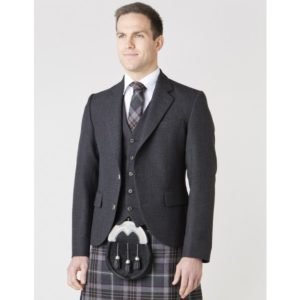Here is a guest blog post from Cynthia who tells me she is a passionate writer and fashion enthusiast:
How to Style a Kilt with Latest Fashion Trends
Kilts have been a symbol of Scottish tradition and heritage for a long time. In recent years, they are becoming more and more popular in the fashion world.
Before, you often saw people wear kilts on formal occasions. But actually, it’s quite OK to wear them in daily life. They are a versatile choice for any wardrobe.
Whether this is your first time wearing kilts or not, learning how to style them is a fun and rewarding experience. This article will also offer some of the latest fashion trends for kilts. After mastering these wearing tips and fashion trends, you will surely become a professional in kilts! So don’t hesitate—let’s start our kilt adventure!
Tips for Wearing a Kilt in a Stylish Way
When you’re ready to wear kilts, there are some important tips that can help you wear them stylishly and confidently.
1. Select the Right Tartan Pattern
To wear a kilt in a stylish way, it is important to select the right tartan pattern. If you have Scottish ancestors, you can choose a tartan associated with your family or clan. Since some tartans are about specific regions of Scotland, you can also choose them for your regional love.
Apart from bloodline and geographical factors, you can select tartans according to your color preferences. Or choose just what you like best!
2. Choose the Right Shirt
It is equally important to choose a suitable shirt to pair with your kilt. Here, we will list some common shirt choices for you:
- Ghillie Shirt: Ghillie shirts are loose-fitting shirts, also called Jacobite shirts. They have leather lace-ups instead of standard buttons. Usually, they come in off-white or black.
- Dress Shirt: Dress shirts are more formal options. Pair them with a bow tie or tie to improve your whole look.
- Wing Collar Shirt: These shirts are most suitable for black-tie events. Try to combine them with a bow tie and a formal kilt.
- T-shirt: For casual occasions, choose a plain T-shirt. Remember to find a solid color to complement your kilt.
3. Pair with a Waistcoat
A waistcoat can add some extra flair and style to your kilt. You can either choose a matching color or texture with your tartan or try a contrasting color or pattern to stand out.
4. Pair with a Jacket
Like waistcoats, you can also pair your kilt with a unique jacket to bring more style. The following are several everyday jackets you can choose from:
- Prince Charlie Jacket: This jacket is a traditional and formal choice. It is a short, tailored jacket with tails at the back. Pair the jacket with a bow tie to complete the look.
- Argyll Jacket: Perfect for casual events, an argyll jacket has a similar length to a suit jacket.
- Tweed Jacket: Made from tweed, this jacket is very durable and brings a relaxing vibe. It often comes in earth tones.
5. Consider the Hose (Socks)
When it comes to choosing the hose for your kilt, you can consider the occasion. Choose white or cream hose for formal events like weddings or ceremonies. For casual occasions, opt for darker tones.
Don’t forget the hose materials. Typically, traditional kilt hoses are made from wool for warmth and durability. For warmer weather, try cotton fabric for comfort.
With a variety of options available, you can surely find one that suits you.
6. Choose the Proper Shoes
Shoes are a key component for your entire look. With so many choices available, you can choose whatever you like. If you prefer a traditional look, try brogues or ghillie shoes. For a modern look, loafers and sneakers are also excellent.
7. Think about a Belt
Traditional kilts actually don’t need a belt. But for a modern look, you can consider a belt to add some extra style and flair. Opt for a belt to complement the material and color of your kilt. You can also choose a buckle to further enhance your look. Experiment with different ways to wear the belt. Find the most suitable way for your kilt.
8. Go with a Sporran
As a traditional Scottish pouch, a sporran is a practical and aesthetic addition to your kilt. You can either choose a sporran that complements your whole look or choose one that contrasts your kilt to make a bold statement.
A sporran is an excellent accessory to enhance your look and keep your essentials at hand.
9. Add Kilt Pins
Kilt pins not only help prevent the front of your kilt from opening but also bring an extra touch to you. You can attach the kilt pin to the top layer of your kilt on the right.
With a variety of colors, shapes, sizes, and materials, you can easily find one to enhance your kilt.
10. Be Confident!
Last but not least, confidence is the key to wearing a kilt. With enough confidence, you can exude style and refinement that captures others’ attention.
Fashion Trends in Kilts
For this year, there are some new fashion trends you can look into. With these trends, you can further improve your kilt look.
Comeback of Traditional Tartans
Traditional tartans have been more and more popular these years. Contemporary designers are now updating classic Scottish tartans with bright colors and creative designs. This combination not only respects the rich history of kilts but also adds a modern feel.
Modern Designs
For a long time, kilts were only available in one style. But now, designers have adopted more contemporary shapes and styles into them. Thus, kilt lovers have a variety of options to choose from, making it easy to find one that matches their styles.
Sustainable and Eco-Friendly Kilts
With more attention to the environment, the fashion industry is making changes, including kilts. Manufacturers are adopting more sustainable and eco-friendly techniques to make kilts. For us consumers, we should look for kilts that not only look stylish but also sustainable.
Rise of Tailored Kilts
Instead of buying a mass-produced kilt, more and more consumers are turning to tailored kilts. Tailoring kilts allows you to choose specific tartan patterns and unique accessories that match your personal style, creating a kilt that is uniquely yours.
Conclusion
To sum up, wearing a kilt is a great way to showcase your unique fashion sense and stand out from the crowd. Whether you are attending a formal event or a casual occasion, a kilt is always a perfect choice!
So, get your first kilt and make a bold statement!







